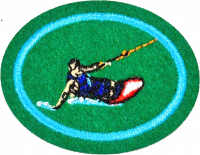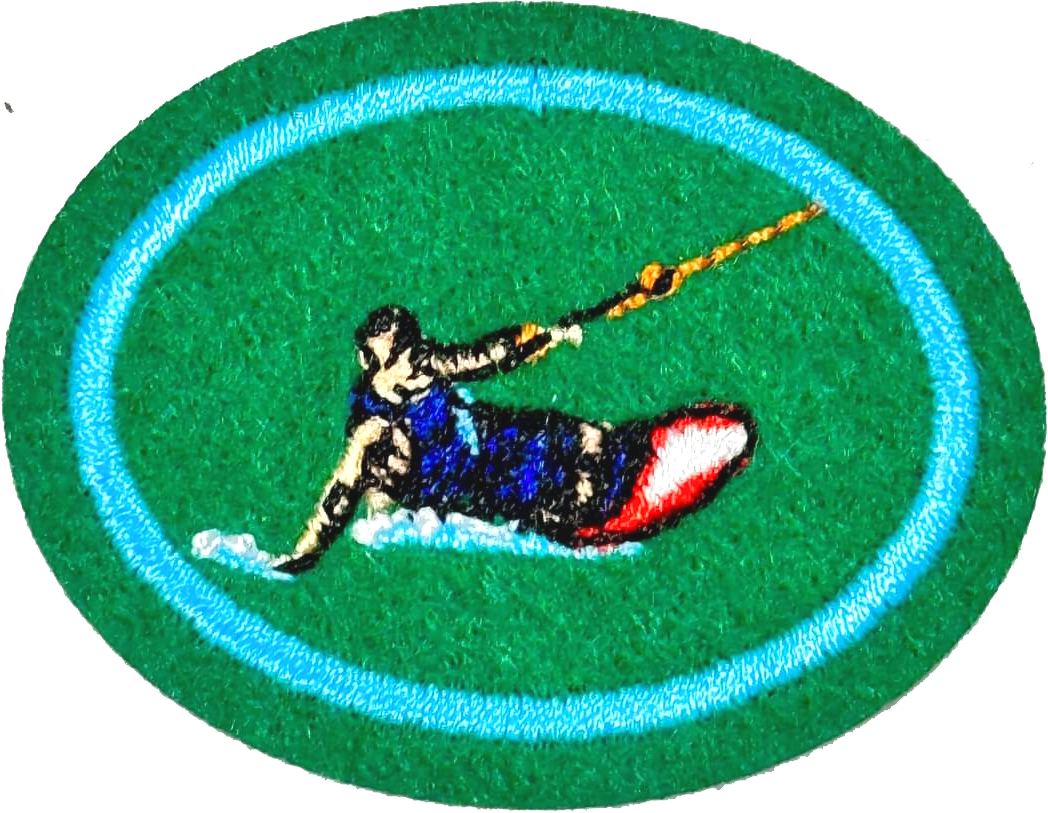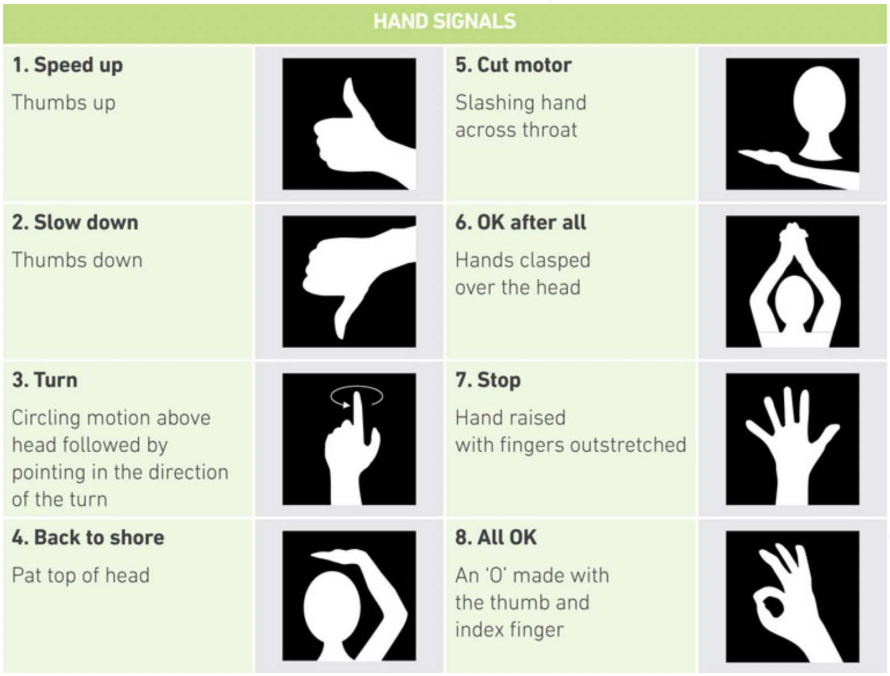Respuestas para la especialidad JA de Kneeboard
1
2
a. Nunca haga kneeboard durante la noche.
b. Nunca haga kneeboard durante una tormenta eléctrica.
c. Siempre utilice un chaleco salvavidas homologado.
d. Verificar que la hebilla del chaleco esté bien cerrada.
e. Demostrar que puede desatar la correa sobre sus rodillas mientras está boca abajo en el agua.
f. Nunca haga kneeboard durante una tormenta eléctrica.
g. Asegurarse de que el kneeboard esté en condiciones de funcionamiento.
h. Tener un observador en la embarcación acuática.
i. Mantenerse alejado de objetos, como otros esquiadores, nadadores, muelles u objetos flotantes.
j. Si ocurre una caída, soltar la cuerda y levantar la mano para indicar que está bien.
k. No estar de pie en el barco mientras está en movimiento.
3
a. Speed Up - Thumbs Up.
b. Slow Down - Thumbs Down.
c. Turn - Circling motion above head followed by pointing to the direction of the turn.
d. Back to shore - Pat top of head.
e. Cut Motor - Slashing hand across throat.
f. OK after all - Hands clasped over the head.
g. Stop - Hand raised with fingers outstretched.
h. All OK - An ‘O’ made with the thumb and index finger.
4
This may require a bit of practice to master and someone to coach you.
5
This may require a bit of practice to master and someone to coach you.
6
Plastic Kneeboard - It is the most common and durable material, it is often foam filled making it buoyant. This leads to a flexible and forgiving kneeboard for beginners.
Fibreglass Kneeboard - Fibreglass makes a stiffer, thinner board with better performance.
Timber Kneeboard - These boards deliver the same thin profile design as fibreglass boards but are easier on the knees with softer landings and springy take-offs. They are more durable than fibreglass boards.




